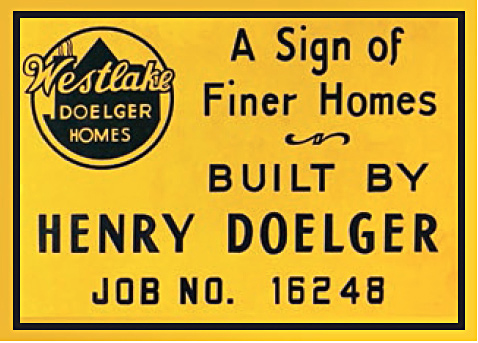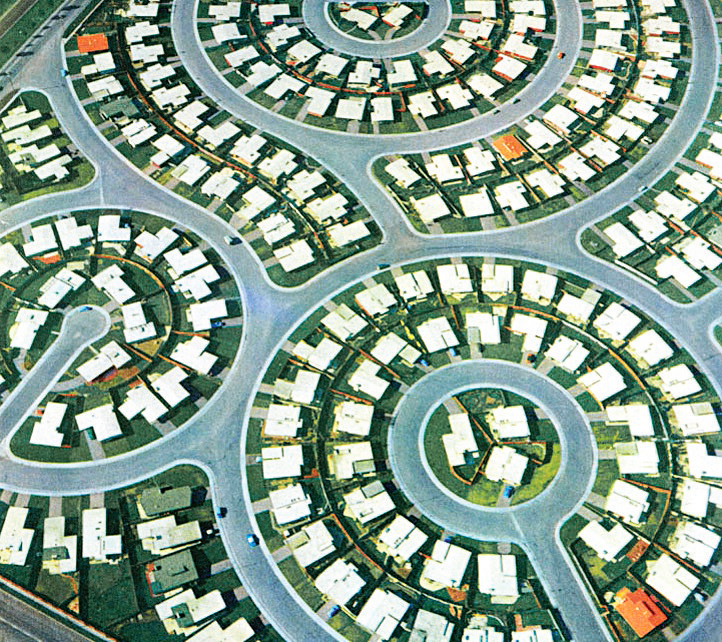Echoes of 'Little Boxes' - Page 2
 |
|
|
"As a kid, I was impressed that they were more interesting and quirkier than they were the same," says Rob Keil, author of an intensive 2006 study of Westlake homes titled Little Boxes: the Architecture of a Classic Midcentury Suburb. They had a more 'modern pop style'—a fun sort of modernism."
Westlake was built by Henry Doelger, a man whose company produced an estimated 26,000 homes in the Bay Area, including much of San Francisco's Sunset District, beginning in 1925. For Westlake, built mainly between 1949 and 1962, Doelger hired architect Ed Hageman to make the exteriors look different from each other.
"There's a variety of Modern, French, Greek styles," says Keil. "Doelger used to pin the drawings of each separate home to the wall, side-by-side, so that there would be a variety of planned styles and colors in each row of homes. Walking down the streets of modest homes in Westlake was a bit like walking down Main Street at Disneyland."
 |
For a neighborhood of sameness, it's interesting to note that a slew of creative people—artists, writers, and musicians, including jazz pianist Vince Guaraldi—lived in Westlake. The same held true of Eichler residents.
Keil and many others believe Malvina Reynolds' song was making a statement about postwar conformity and the need to be and look 'normal.' In the 1950s and early 1960s conformity was 'in.' However, Reynolds' ditty soon became a theme song for poking fun at middle-class normalcy.
At first glance, the songwriter might have held no love for suburbia, only pity for the residents of cookie-cutter neighborhoods, despite being home to many families who loved the convenience and the affordability.
But perhaps Reynolds, as Keil suggests, was speaking about the inhabitants of this place and time, and not the houses themselves.
 |
'Little Boxes' was not just a regional Bay Area song. People from all over the country remember what it meant to them.
Nancy Wallace, north in San Rafael, still thinks of the song and hums it whenever she drives through Daly City.
"'Little Boxes' played on the radio when I lived in Indiana," shared Marilyn Mason of Colorado. "I always thought it was about the Establishment, the desire to grab the American dream, to keep up with the Jones', to be in lock-step with what you perceived that everyone else had, the sudden rush to the mushroom houses springing up and spreading in the 'burbs."
Hugh Haller of Florida remembers the song playing on the radio stations out of New York back in the day. "I thought it to be a warning to my generation to avoid the homogenization—the sameness that we all seemed to acquire as we back-burner the dreams of youth in our almost unavoidable march into Corporate America."
 |
"The song's lyrics can also be pointing to the 'boxes' that society labels as appropriate for us as we move through life and [in the process] lose the ability to be creative and unique," says Richard Scopelli, a psychologist who grew up in L.A., near an Eichler neighborhood.
"There's a pink one, and a green one, and a blue one, and a yellow one."
Was 'Little Boxes' a lyrical eye roll to the multitude of similar homes springing up in suburbs across America, or was there something more?
Yes, the houses may have all looked the same, but there was diversity in the use of color. Even in Eichler neighborhoods, architecturally more homogenous than Westlake, entrance doors were brilliant shades of pumpkin orange, turquoise, paprika red, or sunny yellow. Perhaps, just perhaps, there was a hint of rebellion beginning to take hold among middle-class homeowners just prior to the 'Summer of Love.'




